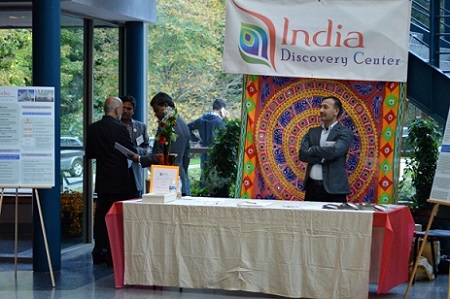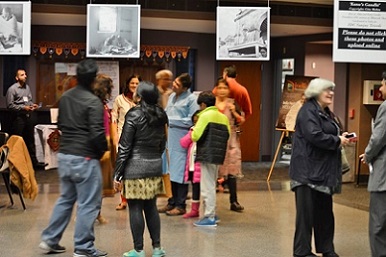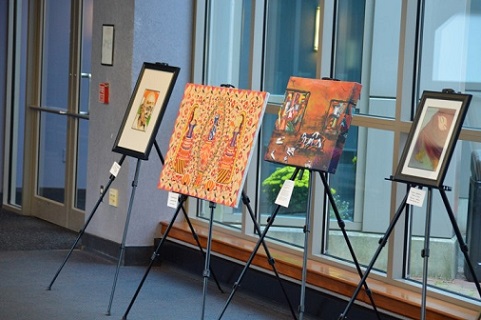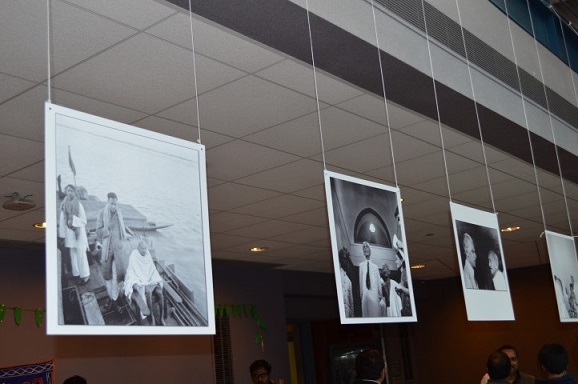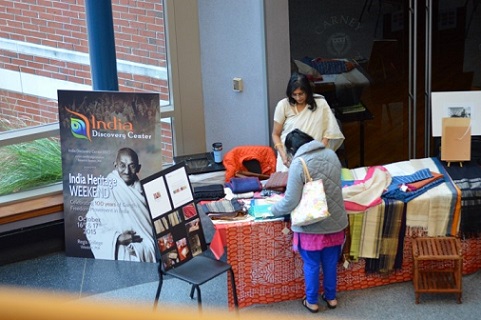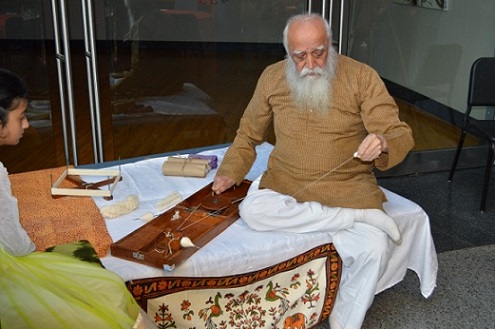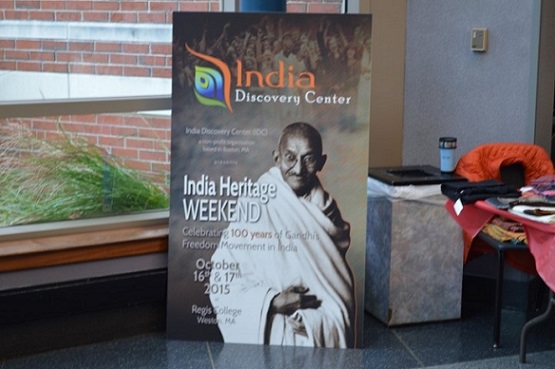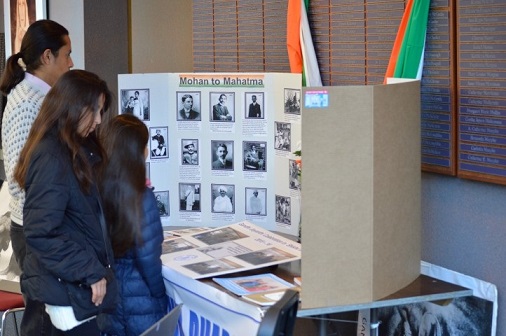Contribute
|
India Discovery Center (IDC) Hosts India Heritage Weekend Painting And Rare Photograph Exhibition |
Swati Dave
10/21/2015
(This article is sponsored by Masala Art)
With the crisp autumn air meandering through the colorful trees in the Weston forests, India Discovery Center (IDC) celebrated the centenary of Mahatma Gandhi’ s launching of Satyagraha in India to gain the freedom of the country. It was a day of triumph for the Boston Indian community with the launch of the India Heritage Weekend, a thematic celebration of India on behalf of IDC, a newly formed non-profit educational institution that aims to construct an education-cum-cultural center in Boston geared to present the tradition, heritage and the history of India in a Museum setting.
The IDC inaugural event spread over two days consisted of an exhibition of paintings on the theme of Gandhi and liberation by the Boston-area artists, an exhibition of rare photographs of Mahatma Gandhi from a special family collection, the showing of the Oscar winning movie “Gandhi†produced by late Richard Attenborough, a specially commissioned concert “Liberation†consisting of music and dance of the world, and a lecture by historian Mr Rajmohan Gandhi, Mahatma Gandhi’s grandson.
People entering the building through the parking lot, were greeted to an art exhibition of the paintings on the theme of “Liberation†by local artists. The paintings were curated by Java Joshi, Prithi Lathia, and Sunanda Sahay. Exhibiting artists included Dr. Java Joshi , Kavita Gohil, Rachna Shah, Mridula Satyamurti, Smitha Bharadwaj, Pushpa Srivastava, and Sunanda Sahay. Besides a beautiful portrait of the Mahatma, paintings represented themes ranging from women liberation to freedom from bondage. Amidst the paintings was a photographic composition by the young students of Indian Cultural School, Shishu Bharati. The panel entitled “Mohan to Mahatma†showed the progression of Gandhi’s life with events and incidents involving him. It was an educational exhibit.
As people descended the stairs to enter the main lobby, they experienced the interplay of vibrancy and simplicity. Vibrancy was created by bright colorful mirror work wall hangings and torans to represent the theme of “Liberation†while the string of “black and white†photographs exemplified the simple and virtuous life of Mahatma Gandhi.
Once in the lobby, amidst the hue of colors and people, all eyes were involuntary drawn to an old man in a white “khadi†attire smiling and talking to people as his hands continuously weaved the thread on his “Charkhaâ€. Everyone, young and old, was intrigued by “Charkha†and bowed in respect to the venerable Mr. Anantvijay Trivedi, who has not missed weaving for a single day for the last sixty four years. His supple fingers creating thread out of cotton through pure mechanical motion was a treat in sight. Many attendees tried out the simple device that spun the cotton. The device was announcing Gandhi’s call for self-sufficiency in dress.
Next to Charkha was an exhibit of handwoven khadi saris by Ms. Laxmi, who works with the khadi weavers in India in order to help revive the dying art. It was fascinating to see the makeover of white “Khadiâ€, once a symbol of austerity and ideology, to its latest colorful look of elegance and class.
On the three sides of the lobby, hanging from the top was an exhibition of rare photographs of Gandhiji taken by his grandnephew late Mr. Kanu Gandhi who was at Boston University in the 80's. The photos from private collection, were provided to IDC courtesy of Bhavesh Shah, coordinated in India by Sanjay Trivedi (Copyright Gita Mehta, heir of Abha and Kanu Gandhi). They were handled by Chandu Shah on behalf of IDC. The analog negatives were digitized in high resolution and printed as Museum quality prints. They contained the famous pictures of Gandhi with Nehru, Gandhi seeking donations from the public, Gandhi and Jinnah in a social setting and the tranquil Gandhi crossing the river Ganga. Each picture told a story of the depth of the man and depicted the historical context of the setting. It was as though one was reliving India’s freedom struggle.
Tucked near the stairs with a vibrant colorful backdrop with an IDC banner on the top was the “India Discovery Center†information booth. The two posters on the either side of the booth were an excellent source of information on IDC vision, mission, and the design. Passionate IDC members shared their insight about the proposed museum, the exhibits, and the research with the inquisitive minds, who were keen to understand more about the IDC work and the plan. Volunteer forms were available for anyone, who wanted to contribute his/her time and skills to this great cause.
Neatly placed in another corner, was a poster that shed light on “The global leaders of Passive resistance/civil disobedience – Henry David Thoreau, Leo Tolstoy, Mahatma Gandhi, Martin Luther King, and Nelson Mandela.†Each a giant in his own work, the group of five seemed to talk to each other and smile at the violence in the world. Gandhi gave the hope: “Have faith in humanity. Humanity is like an ocean; if a few drops in the ocean are dirty, the whole ocean does not become dirty!â€
As people entered the auditorium there was a registration booth, where people were handed the event booklet, elegantly crafted and produced. To enlighten people about Gandhiji’s philosophy, his famous quotes were well illustrated on two big posters. The digital version of the Award winning movie “Gandhi†was shown in the auditorium letting all reflect on the life of the legendary man. The subtle music of Gandhi’s prayer song reverberated the hall.
Amidst all the exhibits, booths, people, and conversations ubiquitously present was the aroma of Indian food, graciously served by Satya of Chettinand Grill, a new friend to IDC. To sum it up, with its harmonious and impactful setting, Casey’s theater at Regis College on this weekend was a perfect blend of three main themes- liberation, Gandhiji and India Discovery Center, all interwoven together by a single thread of to celebrate India and her heritage.
To be followed: The report of the concert “Liberation.â€
You may also access this article through our web-site http://www.lokvani.com/
